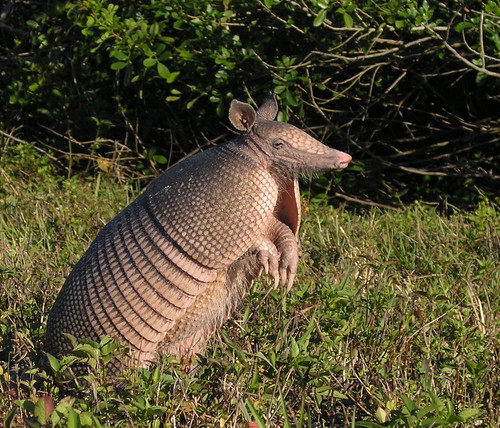Darwin and seeing the "obvious"
Often it requires the genius of a conceptual thinker, which [Louis] Agassiz clearly was, to launch a new way of thinking about natural phenomena. Just how clear-and paradoxically, at the same time unnoticed-the evidence for glaciation was, even to naturalists who were accustomed to careful observation, is nicely illustrated by a passage from Charles Darwin's autobiography. In 1831, just a few years before the publication of Agassiz's ice age theory, Darwin was on a field trip in Wales with a prominent geologist [Adam Sedgwick!]. Anxious to find fossils, they scoured hill and valley, examining the rocks in great detail. But they completely missed the evidence for glaciation that surrounded them. Years later and by then fully aware that the Earth had experienced extensive glaciation, Darwin wrote about his earlier field excursion: "On this tour I had a striking instance of how easy it is to overlook phenomena, however conspicuous, before they have been observed by anyone... neither of us saw a trace of the wonderful glacial phenomena all around us; we did not notice the plainly scored rocks, the perched boulders, the lateral and terminal moraines."
The italics above are mine. They emphasize the common experience that is implicit in the phrase "point out the obvious." Some things are invisible until someone shows them to you; then they pop up everywhere. Darwin marveled that he and his geological colleague could have overlooked these glacial features that he late found so conspicuous that "a house burned down by fire did not tell its story more plainly than did this valley."
From Frozen Earth: The Once and Future Story of Ice Ages. by Doug Macdougall (University of California, 2004) pp. 15-16
What makes this especially interesting is that this is something Darwin understood completely from his own field. When he first visited the Galapagos Islands on his famous voyage of discovery, he did not realize the significance of what he saw, it was only on reflection after he returned that he began to formulate his Theory of Evolution through Natural Selection. David Quammen in his book The Song of the Dodo., discusses how Darwin did not even realize at the time of his visit the need to catalogue on what island he had collected a specimen on.
The most remarkable aspect of the natural history of the Galapagos, Darwin wrote in his Journal with the wisdom of hindsight, was that "the different islands to a considerable extent are inhabited by a different set of beings." What he meant by that murky phrasing was that the different islands supported distinct species and subspecies within certain lineages. "My attention was first called to this by the Vice-Governor, Mr. Lawson, declaring that the tortoises differed from the different islands, and that he could with certainty tell from which island any one was brought."....
...
Darwin would later regret that he had let the vice-governor's comment about shell differences [among the tortoises] slide past him. "I did not for sometime pay sufficient attention to this statement, and I had already partially mingled together the collections from the two islands." He hadn't guessed [yet] that islands so similar in physical conditions, and so close together, could be inhabited by distinct sets of creatures.
His methodological mistake, as I've mentioned earlier, didn't apply just to tortoises; he had also jumbled some of his bird specimens together without regard to their island of origin. "Unfortunately most of the specimens of the finch tribe were mingled together," he admitted in a later edition of the Journal. Bear in mind that even the first published edition of this Journal was written after he had arrived back in England; it was a literary composition for which his Beagle diary and field notebooks supplied raw material. During the actual field work, his perspective had been different. Collecting with zeal but without time or distance to reflect, he had lumped specimens together carelessly and ignored the suggestive patterns of archipelago speciation [which of course no one had recognized before]. Only later, back in England, with help from taxonomic specialists, did he notice enough to bemoan the mistake and imagine the implications of the data he hadn't quite gathered. Such retrospective insights were exactly what distinguished the Journal (especially in its revised editions) from the diary.
From The Song of the Dodo.. by David Quammen (Scribner, 2004) pp. 215-16
It is easy to regard Quammen as to hard on Darwin, but this issue aside, what this really shows is how even the most perceptive mind can miss the evidence if it does not have any idea to where it is pointing. When he was collecting his specimens it was very unlikely that Darwin could have seen the big picture that having a set of specimens and the leisure to examine them and consider what the collection meant, that he could have known what he was “supposed” to have been seeing.

